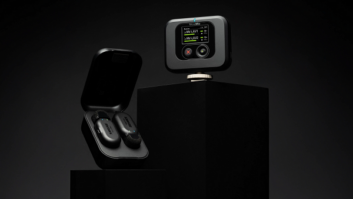Las Vegas – The
rise of the tablet is creating winners and losers and influencing the design of
CE products that are trying to defend their value propositions, NPD Group
analysts said last night during an NPD-hosted panel discussion at the Bellagio.
In a three-screen
world, TVs, PCs, and cellphones “had clear demarcations,” said NPD industry
analysis VP Stephen Baker. But it took only one 10-inch screen to “upend the
Apple cart.”
One product whose
sales have been unaffected by the tablet is the PC, he said. “The tablet has
been an incremental sale to the PC” and has not cannibalized PC sales, he said.
The tablet “is a new screen.”
Although there is
“some overlap in the tasks” performed by PCs, smartphones and tablets, the
three devices are “used basically for different reasons,” added Jim McGregor,
chief strategist for NPD-InStat.
Notebook computer
sales are down due more to market maturity than anything else, said NPD
DisplaySearch senior analyst Richard Shim. Nonetheless, as tablets evolve to
offer higher performance, notebooks are evolving into Ultrabooks with thin
profiles and instant-on capability, he said.
Likewise, TVs and
smartphones are evolving in a bid to compete with tablets for usage time to
keep consumers interested in buying them, said Baker. As a result, TVs are
getting smarter, and smart-TV sales grew 67 percent in the third quarter of
2011 compared with the year-ago quarter, he said. Similarly, smartphones are
evolving to offer bigger screens. Sales of smartphones with screens of 4 inches
or larger grew 126 percent in the third quarter of 2011 compared with the year-ago
quarter, he said.
While CE makers
evolve their products to compete for usage time, content makers could be headed
for tougher times because of the tablet, said Russ Crupnick, industry analysis
senior VP at The NPD Group. Apple’s iPad is driving up sales of apps in the
iTunes store, but iPad users are increasingly streaming music and video rather
than downloading and purchasing the content, he said. Streamed content delivers
lower margins for content providers, compared with purchased content, he pointed
out.
The
content-consumption trend “is not to the advantage of the movie studios or
record labels,” Crupnick said.
The challenge for
the content community will be to leverage tablets’ ability to help consumers
discover new content and entice them into buying higher margin downloads or
Blu-ray discs, he said. Content providers must develop “better tools for search
and discovery to drive consumers to buy high-margin products,” he continued.
Although tablets
are pressuring the content community, tablets and smartphones might be posing a
greater challenge to retailers. “Third-party retailers have a smaller share of
the four-screen world than the two-screen [TV and PC] world,” said Baker. Half
of all iPads sold are sold directly by Apple, he said. Two-thirds of all Nook
and Kindle e-readers are sold by Barnes & Noble and Amazon, respectively,
and three-fourths of all smartphones are sold by cellular carriers.
Another challenge for
retailers is that they sell devices, “and someone else sells the content and
services,” Baker added.
Amazon and Apple
are formidable competitors in the tablet market precisely because they are
content aggregators who provide a solution to consumers, added McGregor.
On other topics
related to the rise of tablets, research director Linda Barrabee pointed out
that tablets and smartphones are largely being used for different functions.
Tablets are being used largely for web browsing, games, video playback and
reading, while reading and video playback are the least used capabilities of
smartphones. Smartphones are also used more often for navigation and
picture-taking than tablets, she said. Surprisingly, only about 37 percent of
smartphone usage is for communications.
As for the sales potential for 3G- and 4G-equipped
tablets, Barrabee said “the trends is not looking good for them [cellular
carriers].” More than 90 percent of tablet users say they use tablets in the
home, where they can access the Internet via Wi-Fi. With the average price for
a cellular data package running at $25/month for 2GB of data, and because
people use tabs mostly at home, consumers “just don’t need it [3G or 4G],” she
said. Unless the content accessed on tablets becomes need-to-have content
versus nice-to-have content, “it will be an uphill battle” for 3G/4G tablets.
In response to an
audience question about the potential for content providers to leverage tablets
to add value to what they offer on TV, Crupnick noted that most consumers
aren’t interested in the BD-Live feature of Blu-ray Discs and players. The
purpose of BD-Live was to get people more engaged with their Blu-ray title, he
said.













